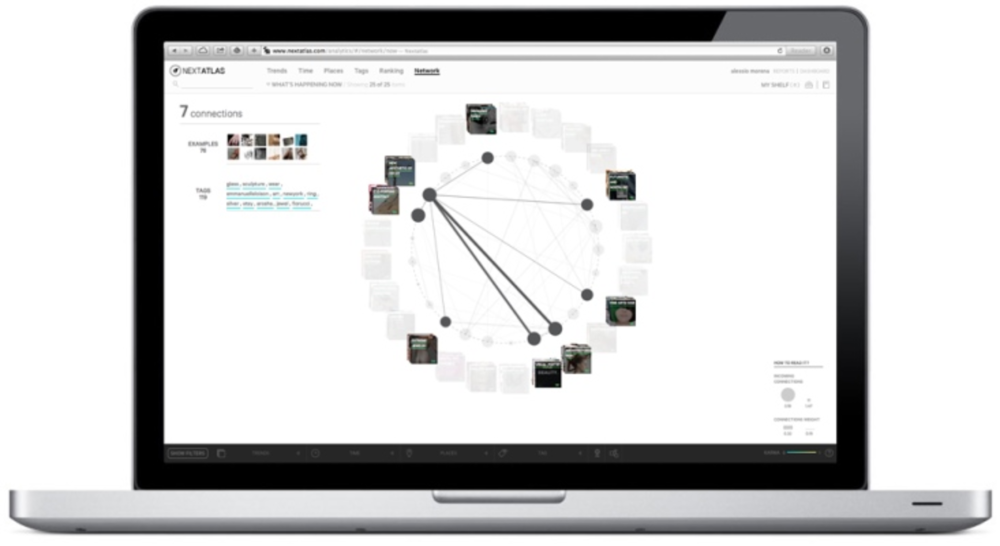Social media is a bit like a focus group of humanity—users are, at every moment of the day, sharing content and leaving tantalizing clues as to their interests, passions, concerns, needs, pastimes, loves, and pursuits.
NextAtlas, a new tool developed by Italian brothers Alessio and Luca Morena, is looking to take advantage of that information by examining social media streams in real time to spot emerging trends before they hit the mainstream, kind of like a first warning weather radar system for marketers. It also claims to give brands the ability to track trends over time—watching them percolate until it’s time to take action or use one in a campaign.
Luca Morena says it’s akin to “Bloomberg for trends.” Users can monitor trends a bit like stockbrokers might monitor stocks, watching the trends grow or diminish in real time. (Click the image below to enlarge.)
NextAtlas taps third-party data from social channels, primarily Tumblr and iCoolHunt, a photo-sharing mobile game, not unlike Pinterest in appearance, which the Brothers Morena launched back in 2011. iCoolHunt pits players against each other with the goal of discovering, or “coolhunting,” the next big things in fashion, music, and tech before they surface. Next up, the Brothers Morena are looking to integrate Pinterest and Twitter data into the NextAtlas algorithm.
NextAtlas users will be able to track a variety of data points, including location, and the speed at which trends develop, as well as the various connections between the trends themselves. The goal is quality over quantity—to see which trends are relevant and will bubble to the surface, and which trends are just temporary noise or not worth pursuing.
The tool is currently being rolled out in the U.S., although it’s already been made selectively available in beta to certain brands in Europe, including Maserati, Maybelline, and Prada.
“In many cases technology and the great revolution of data analytics has caused quantity to collapse quality, but what we’re trying to do is use numbers to support intuition,” says Luca Morena. “We’re not crunching all of the data sets in Tumblr—we’re trying to identify micro-communities of trend-spotters, even if they might not define themselves as such.”
Armed with those insights, brands can plan marketing campaigns that tap into the cultural zeitgeist based on analysis rather than anecdotes.
One example is the so-called “unexpected gardens” trend—literally gardens being planted in unlikely or strange places, like planting tiny flowers in a pair of earrings or…in a urinal. The trend culminated in an NYC installation by street artist Banksy that included an elaborate mobile garden planted in the back of a truck covered in graffiti.
It’s the kind of information clever brands can appropriate and integrate into their content—if they know about it.
“What we’re trying to do is monitor creativity and help make it into a reality for brands,” Luca Morena says. “And the most effective way to do that is to crunch the data on social media because it mirrors what people are doing and their interests in the real world.”
(images via: wearable planter, gardens in unexpected places)






